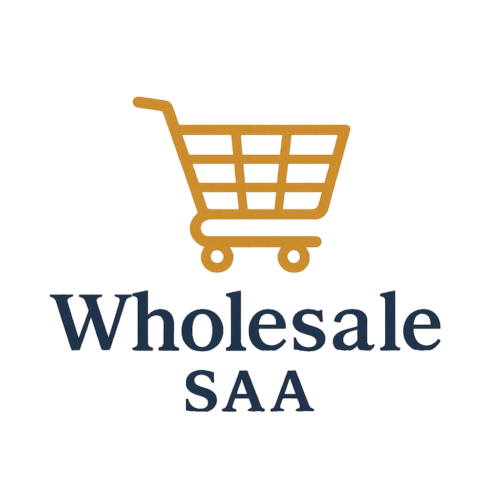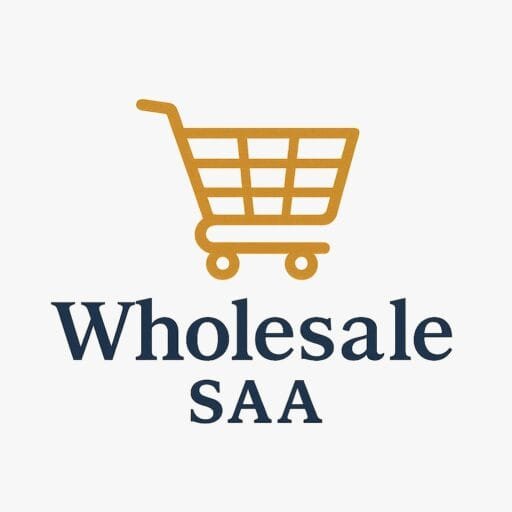Picture this: your warehouse is filled to the brim with fantastic products. The packaging is on point, your pricing model is solid, and you’ve spent months perfecting your inventory. But there’s just one issue: retailers aren’t buying. You’re not alone—many wholesalers find themselves stuck at the same roadblock. The problem isn’t the product. It’s the pitch.
“Turning inventory into opportunity starts with the right retail connections.”
Selling wholesale is more than just offering bulk discounts. It’s about building relationships, understanding the psychology of retail buyers, and creating value beyond the numbers. This article will walk you through the entire process of selling wholesale products to retailers effectively, from understanding your target to mastering the follow-up game.
1. Understand the Retailer’s Mindset
Before you try to sell anything, you need to understand what retailers want. Their primary concerns aren’t just about the product; they care about:
Profit margins: Can they mark up your product and remain competitive?
Turnover rate: Will your products sell quickly or gather dust?
Reliability: Will you deliver on time and as promised?
Uniqueness: Does your product fill a gap in their offering or set them apart?
Retailers are constantly juggling risk and reward. Your job is to minimize the former and maximize the latter.
Tip: Frame your pitch around their success, not yours. Retailers aren’t interested in your growth story, they want to know how your product can help them grow.
Expert Quote:
“I get pitched every week, but only a few brands really take time to show how their products fit my shelves and speak to my customers. That’s what gets my attention.”
— Jillian Marks, Owner, Magnolia & Main Boutique, Nashville
2. Refine Your Product Offering
A great product isn’t enough if it’s poorly presented. Retail buyers need to quickly understand what you sell, how much it costs, and how it fits into their existing assortment.
“A clear brand identity helps retailers visualize your product on their shelves.”
Your wholesale catalog should include:
Clear pricing tiers
Case pack sizes
Minimum order quantities (MOQs)
High-resolution product images
SKU numbers and product descriptions
Think about seasonal bundles, limited edition runs, or private label options. Offering flexibility can make your product more appealing.
Example:
P.F. Candle Co., based in Los Angeles, gained national distribution by investing in sleek packaging and a clean, consistent scent catalog. Their early success with boutique stores caught the eye of Urban Outfitters.
3. Set Up Professional Systems
Professionalism builds trust. U.S. retailers want to work with suppliers who have their act together. Invest in systems that make doing business with you easy:
Digital line sheets and order forms
Online B2B ordering portals like Faire or Handshake
Inventory management tools (e.g., QuickBooks Commerce, Cin7)
Prompt invoicing and fulfillment protocols
Pro Insight: Reliability beats price. A dependable supplier with slightly higher costs often outperforms a cheaper but inconsistent competitor.
4. Build a Strong Brand Story
Brand storytelling isn’t just for consumers. Retail buyers use your story to sell the product in-store. A compelling narrative can make your product stand out.
“A clear brand identity helps retailers visualize your product on their shelves.”
Ask yourself:
What inspired your business?
What values does your brand uphold?
What kind of customer does your product serve?
Align your brand with the retailer’s identity. If you’re eco-friendly, target stores with a sustainable mission. If you’re luxury-focused, aim for high-end boutiques.
Real-World Angle:
Blueland, a sustainable home cleaning brand, crafted a bold story around reducing plastic waste. Their values-first approach resonated with eco-conscious retailers like Grove Collaborative and The Container Store.
5. Research and Target the Right Retailers
Not every retailer is the right fit. Identify where your products naturally belong:
Boutique stores
Specialty shops
Online retailers
Chain stores
Segment your list by market, location, or customer type. Then research their buying process:
Who makes the decisions?
When do they place orders?
Do they attend trade shows or prefer online platforms?
“Targeting the right niche increases your chances of a profitable partnership.”
Case Example:
A specialty coffee wholesaler expanded by targeting independent hotel gift shops in the Pacific Northwest. The strategy paid off with higher reorder rates and personalized marketing.
Expert Quote:
“Start local, learn fast. Pitching small retailers helped us refine our offer before scaling up. Now we’re stocked in 200+ shops, and half of those came through Faire.”
— Carlos Navarro, Founder, Good Grounds Coffee
6. Perfect the Pitch
When it’s time to pitch, think customisation. Retailers can spot a generic sales pitch a mile away. Your outreach should include:
A personalised greeting
A brief introduction of your brand
Key product benefits (from the retailer’s perspective)
Wholesale terms and links to your catalogue
An easy way to respond or schedule a call
Pitch Template:
“Hi [Retailer’s Name],
I came across your store and was impressed by [specific detail]. I think our line of [product] could be a great fit for your customers, especially because [specific benefit].
We offer competitive wholesale pricing, quick turnaround, and marketing support to help you sell through. I’d love to share our catalogue and discuss how we can work together.
Best, [Your Name]”
“Personalized pitches convert better than bulk emails—every time.”
7. Price Strategically
Wholesale pricing must work for you and your retail partners. Typical keystone pricing means doubling the wholesale cost for retail. Key considerations include:
Volume discounts
MSRP guidelines
Seasonal promotions
Avoid undercutting your retailers online
Insight Box: Underpricing may boost early sales, but it can hurt long-term credibility. Price communicates quality.
8. Master the Art of Follow-Up
One pitch isn’t enough. Many wholesale deals happen after multiple touchpoints. Follow up strategically:
Wait a week after the first email
Keep it short and value-driven
Offer something new (a sample, discount, or testimonial)
Quick Tip: If they say no, ask why. The feedback could help you close the next deal.
Expert Quote:
“We landed our first $50,000 retail account on the third follow-up. Persistence, paired with listening, made all the difference.”
— Nina Patel, Founder, Nourish Naturals Skincare
9. Create Win-Win Partnerships
Think beyond the transaction. Retailers value vendors who:
Provide promotional materials
Offer training or product knowledge
Are willing to co-market on social media
Support reorders and customer feedback
Expert Quote:
“The best wholesale suppliers are collaborative. They don’t just sell us products, they help us sell it better.”
— Lena Chu, Buyer, Spruce & Honey, Portland
10. Leverage Trade Shows and Online Platforms
Trade shows are still powerful, but online platforms have made wholesale more accessible than ever.
Trade Shows:
NY NOW (New York)
ASD Market Week (Las Vegas)
American Handcrafted (Philadelphia)
Online Platforms:
Faire
Abound
Bulletin
Handshake
“Trade shows and B2B platforms offer unparalleled access to serious buyers.”
Mini-Guide – Trade Show Checklist:
Branded booth and signage
Product samples
Line sheets and order forms
Business cards
Follow-up plan
11. Common Mistakes to Avoid
Even experienced wholesalers fall into traps. Here’s what to watch out for:
Inconsistent pricing: Undercutting your retailers online erodes trust.
Overcomplicating the offer: Too many SKUs or unclear terms confuse buyers.
Ignoring follow-up: Most sales happen after the first touchpoint.
Skipping retailer training: Retail staff can’t sell what they don’t understand.
Neglecting brand identity: If your presentation is sloppy, buyers assume your operations are too.
“A disjointed process can cost you the deal. Consistency is key.”
Quick Fix: Simplify your catalog, polish your email templates, and double-check your pricing alignment.
12. Measure, Improve, Repeat
Track what works. Use data to refine your strategy:
Sales conversion rates
Average order value
Retailer feedback
Best-selling products
Refining your approach means listening, adapting, and staying proactive. Keep iterating until the system hums.
Conclusion: Selling Wholesale is a Long Game
Wholesaling isn’t about quick wins, it’s about building bridges that last. The most successful wholesale businesses:
Understand their buyers
Tell compelling stories
Operate like true partners
Start small. Perfect your pitch. Deliver on your promises. And always, always put the retailer’s success at the heart of your strategy.
“Wholesale success is about relationships. Make every one count.”





